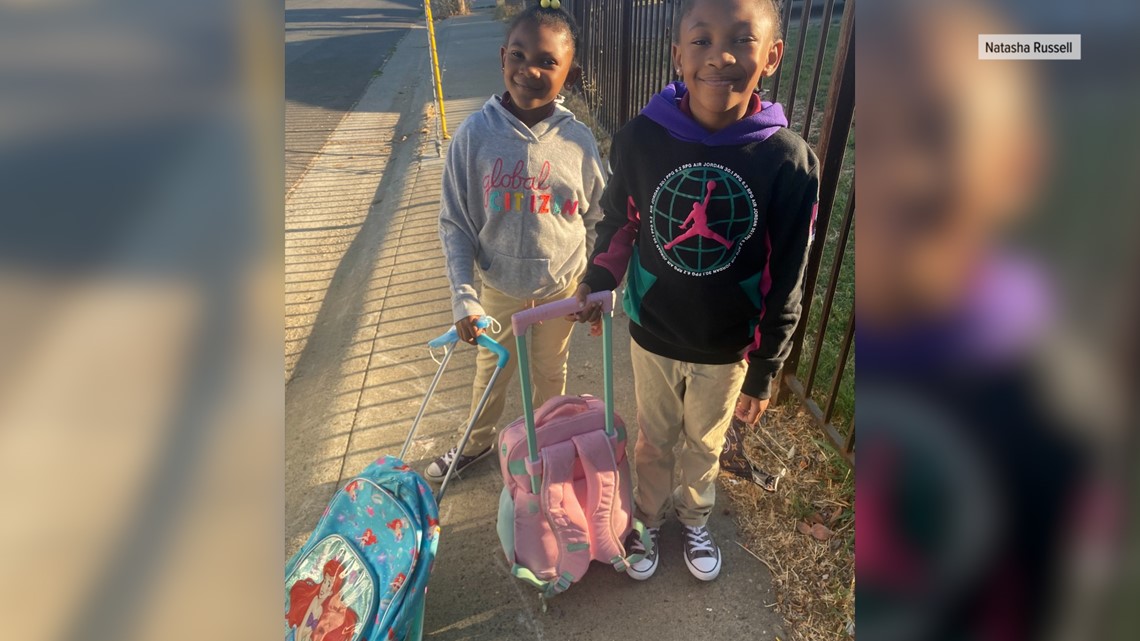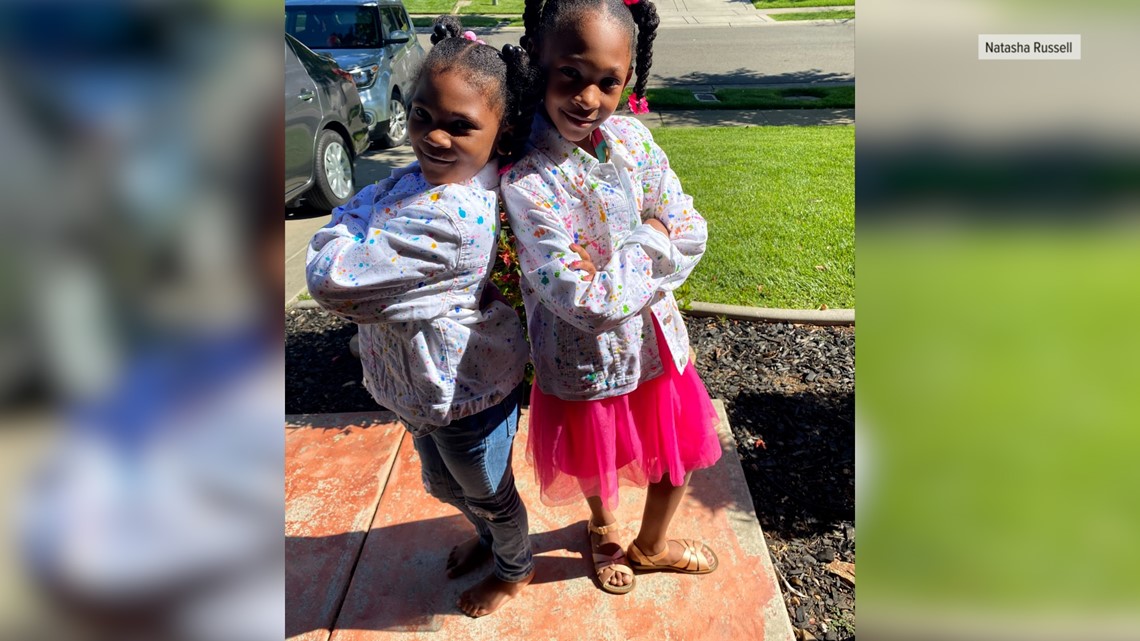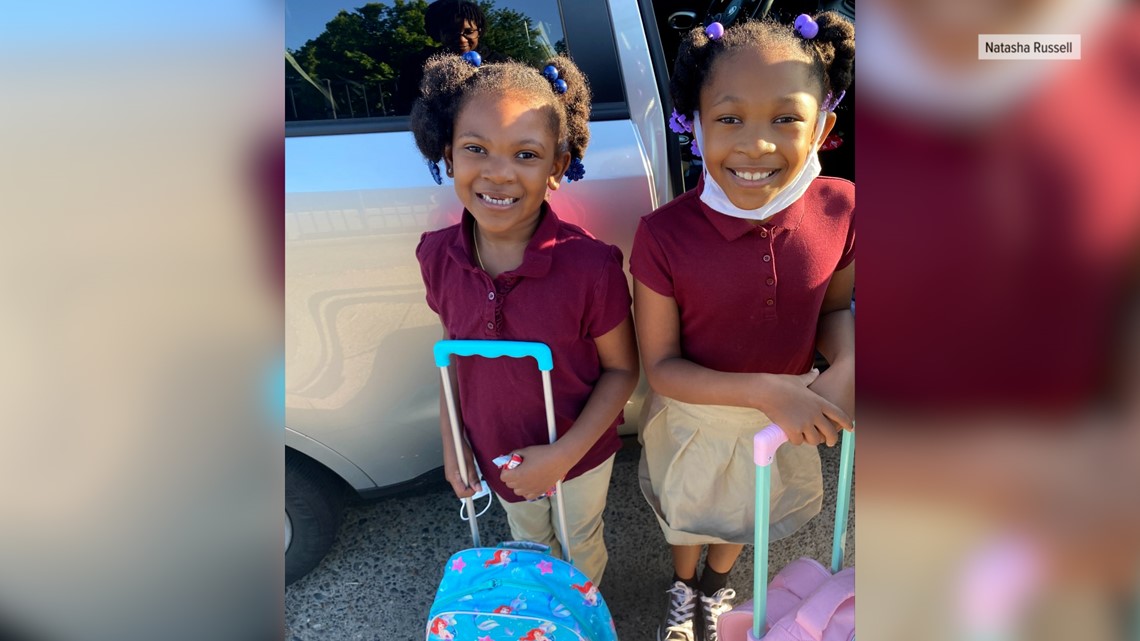SACRAMENTO, Calif — Sacramento City Unified School District closed all schools on Wednesday due to a districtwide teacher's strike. The school district serves more than 40,000 students on 75 campuses.
When schools close, everyone is impacted. The social and economic hit, however, is more severe for the most vulnerable and marginalized students and their families.
School closures also increase inequalities and exacerbate pre-existing disparities in the education system. That's according to the United Nations Educational, Scientific and Cultural Organization (UNESCO), an agency that seeks to build peace through international cooperation in education, sciences, and culture.
As a single mother, Natasha Russell works two jobs to help care for her children. Both children, Mya and Jaliya, attend New Joseph Bonnheim Elementary in Sacramento. Russell, ironically, scheduled time off work a month earlier on the same date of the teacher's strike.


"People probably had to call out of work today," said Russell . "I'm blessed that I actually took the day off a month ago. Now, I'm able to be home with my kids. But, if I didn't do that, I would've had to call out of work. I would not have been able to have people to watch my kids, just on the fly like that."
The COVID-19 pandemic already disrupted all aspects of public education in California. That includes school enrollment, attendance, assessment scores, student and family engagement, and student learning. Now, Russell is worried the teacher's strike will widen the student achievement gap, especially for her children.
► Get more stories about race and culture: Sign up for our newsletter at www.abc10.com/email and find more online in our Race & Culture section.
"The striking is not helping," Russell said. "It's putting them more behind. They are not learning. So, it's going to be hard for them to be at the level standard at the end of the year, when they're supposed to go to the next grade."


As a parent, Russell had to explain the teacher's strike and school closures to her children. While educators with Sac City Unified strike, Russell 's children, along with other students, are facing social isolation.
"I feel sad," Mya said. "I don't get to play with my friends. The teachers should not do the strike so that all kids can go back to school and learn. I think school is important so you can learn and be very smart."
For Russell, and other working parents in underserved communities, one of the main consequences of a school closure is the economic impact due to wage or work loss. If school remains closed, Russell plans to lean on others for help in childcare.
"We still need to be able to go to work," she said. "It could be hard when you miss a day at work and you don't have paid leave. It could be hard because then you're trying to find another day to make up the hours. We still have bills."


In an effort to make sure students have access to healthy meals during the strike, SCUSD Nutrition Services Department offered grab-and-go meals for students. Meals were made available at several community locations, including Shiloh Baptist Church in the Oak Park neighborhood.
Russell visited the grab-and-go site to make sure her children had food to eat. If schools remain closed, she will be counting on the district to provide more grab-and-go meals.
The UNESCO provides the following list of school closure consequences for communities of color and the most vulnerable students, like students with disabilities or homeless students.
- Interrupted learning: Schooling provides essential learning and when schools close, children and youth are deprived opportunities for growth and development. The disadvantages are disproportionate for underprivileged learners who tend to have fewer educational opportunities beyond school.
- Poor nutrition: Many children and youth rely on free or discounted meals provided at schools for food and healthy nutrition. When schools close, nutrition is compromised.
- Confusion and stress for teachers: When schools close, especially unexpectedly and for unknown durations, teachers are often unsure of their obligations and how to maintain connections with students to support learning. Transitions to distance learning platforms tend to be messy and frustrating, even in the best circumstances. In many contexts, school closures lead to furloughs or separations for teachers.
- Parents unprepared for distance and homeschooling: When schools close, parents are often asked to facilitate the learning of children at home and can struggle to perform this task. This is especially true for parents with limited education and resources.
- Challenges creating, maintaining, and improving distance learning: Demand for distance learning skyrockets when schools close and often overwhelms existing portals to remote education. Moving learning from classrooms to homes at scale and in a hurry presents enormous challenges, both human and technical.
- Gaps in childcare: In the absence of alternative options, working parents often leave children alone when schools close and this can lead to risky behaviors, including increased influence of peer pressure and substance abuse.
- High economic costs: Working parents are more likely to miss work when schools close in order to take care of their children. This results in wage loss and tend to negatively impact productivity.
- Unintended strain on healthcare systems: Health-care workers with children cannot easily attend work because of childcare obligations that result from school closures. This means that many medical professionals are not at the facilities where they are most needed during a health crisis.
- Increased pressure on schools and school systems that remain open: Localized school closures place burdens on schools as governments and parents alike redirect children to schools that remain open.
- Rise in dropout rates: It is a challenge to ensure children and youth return and stay in school when schools reopen after closures. This is especially true of protracted closures and when economic shocks place pressure on children to work and generate income for financially distressed families.
- Increased exposure to violence and exploitation: When schools shut down, early marriages increase, more children are recruited into militias, sexual exploitation of girls and young women rises, teenage pregnancies become more common, and child labor grows.
- Social isolation: Schools are hubs of social activity and human interaction. When schools close, many children and youth miss out of on social contact that is essential to learning and development.
- Challenges measuring and validating learning: Calendared assessments, notably high-stakes examinations that determine admission or advancement to new education levels and institutions, are thrown into disarray when schools close. Strategies to postpone, skip or administer examinations at a distance raise serious concerns about fairness, especially when access to learning becomes variable. Disruptions to assessments result in stress for students and their families and can trigger disengagement.

